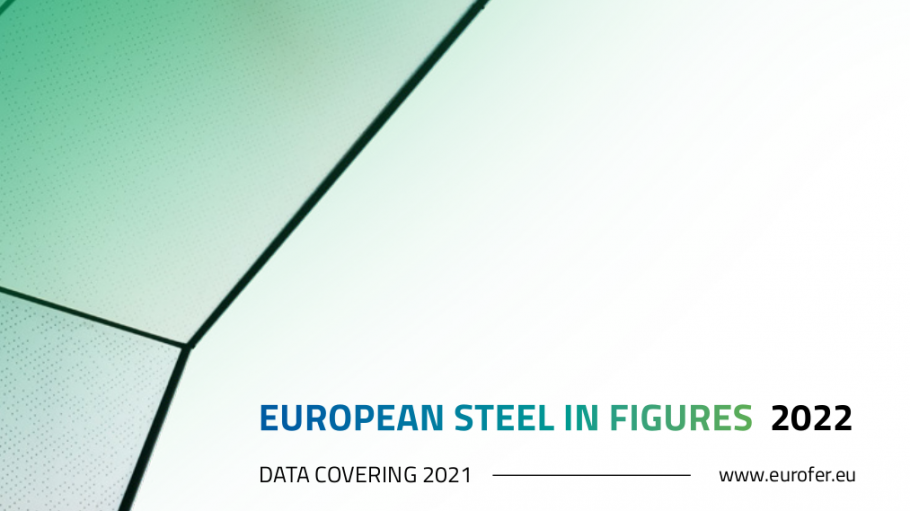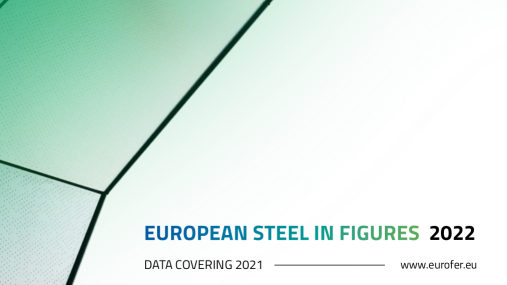
Publications » Brochures, booklets or fact-sheets » European Steel in Figures 2022
European Steel in Figures 2022
Downloads and links
Recent updates

European Steel in Figures 2022 is the fourteenth edition of the European Steel Association’s (EUROFER) statistical guide, which covers data up to 2021.
It is the first edition that takes fully into account the departure of the United Kingdom from the EU and its internal market. From now on, all aggregated data for the EU refer exclusively to EU27, and historical datasets have been adapted accordingly.
The numbers presented in the 2022 edition identify the main trends of the past year through data, and reflect both the new reality post Brexit and the consequences of the pandemic. In particular, they show the strong rebound experienced in the aftermath of restrictive COVID measures and the progressive slowdown of the recovery due to increasing supply chain disruptions, soaring energy prices and shortages of raw materials occurred in the second half of 2021.
We hope that our statistics will be of use for those working within and with the steel industry. We also hope that they can help guiding policymakers both at EU and national level in making the right choices when it comes to political decisions impacting the industry, such as climate, energy and trade policies.
We wish you a fruitful utilisation of European Steel in Figures 2022.

Download this publication or visit associated links
Brussels, 27 November 2025 - The European ceramic, aluminium, ferro-alloys and steel industries express their deep concern about the potential impact of the EU-India FTA on strategic European industries if a sector-specific approach is not adopted and our sectors’ challenges are not duly considered.
Brussels, 20 November 2025 – Today the European Steel Association (EUROFER) elected its new Board, President and Vice-Presidents (see Annex). Henrik Adam was confirmed as President of the organisation for another two-year term.
Brussels, 22 October - Ahead of the European Council meeting on 23 October, Europe’s steel and automotive industries — two strategic pillars of the EU economy — are issuing a joint call for a realistic and pragmatic pathway to transformation and keeping investments in Europe. Together, these sectors form the backbone of Europe’s industrial strength, supporting over 13 million jobs in automotive and 2.5 million in steel (directly and indirectly), and driving innovation across entire value chains.